Review: 2016 Acura ILX (With Video)

It has been two years since we last looked at the ILX, and my conclusion went like this:
The 2.4L engine needs an automatic and some infotainment love, the 2.0L engine needs more grunt and the hybrid needs to be euthanized. Without changes like these, the Acura ILX will remain a sensible Civic upgrade but as a competitor to Buick’s new-found mojo, Acura has some catching up to do.
2016 brings what I was expecting: a mid-cycle refresh with a new nose and new rump to keep the photos fresh. What I didn’t expect was for Acura to also address the major mechanical systems that we all complained about. Neither did I expect the ILX to be so transformed by a “simple” heart transplant. Can the ILX live up to the legendary Acura Legend? I snagged the keys to a “A-Spec Technology Plus” model to find out.
Exterior
Acura is not the kind of company that dishes out one daring design after another, especially since the Acura “beak” went over so poorly. As a result this ILX, like its predecessor, plays right to the conservatively styled heart of the traditional Acura shopper.
As has been said in the past, the ILX is related to the Honda Civic, but the relation is more third-cousin than sister. The ILX never shared sheetmetal or glass with its plebeian platform mate, and the ILX isn’t a simple re-skin either. While the wheelbase is shared with the Civic, nearly every hard point was changed from the A-pillar moved 8-inches rearward, trunk and door openings modified to the lowered roofline, the 2016 ILX shares as much with the Civic as the original Chrysler 300 shared with the Mercedes E-Class.
As expected, Acura swapped in a set of full-LED headlamps styled after the multi-beam modules we first saw in the MDX and RLX, and further massaged the front end to look more like the larger TLX. Acura’s quest to give the ILX more of a “wedge like” appearance rather than a tall hood translates to a somewhat pointy front to the side profile. Out back the changes are minimal but the A-Spec trim our tester wore gives the sedate sedan a bit more style and a tasteful chrome strip on the trunk spoiler.
Interior
Interior parts quality is right in line with the Buick Verano which, as expected, is a notch below the more expensive A3, CLA, S60, IS 250 and 320i. As you’d expect in a “near-luxury” vehicle, most of the ILX touch-points are soft plastic but you will find hard plastic lurking below the faux-metal trim and making up most of the center console. Front seat comfort is good but the lack of adjustable lumbar support is surprising. All models get an 8-way power driver’s seat, but only upper trims offer seat memory or a power passenger seat. An important side-effect of Acura’s modifications to the platform’s roof-line is limited headroom. Headroom is further limited up front by the standard sunroof, a nice value feature for sure, but at 6-feet tall my head missed touching the ceiling by millimeters. Acura will no doubt show taller shoppers the TLX.
The ILX’s rear seats are slightly less comfortable than the Verano, but a step above the mainstream compact segment with more thigh support for adults and considerably more legroom than the Mercedes CLA, Volvo S60, and despite the spec sheet saying otherwise, the A3 sedan as well. The key seems to be in combined front and rear legroom where the ILX shines. On the downside, Acura chose to share the rear seat frame with the Honda Civic giving the ILX a 100% folding bench seat that is far less practical than the more common 60/40 variety. This would be less of a problem if the trunk had grown in 2016, but it is still stuck at a smallish 12.3 cubes, smaller than the Verano, Lexus CT or Mazda3.
Speaking of the Mazda3, the small Mazda is in many ways a similar vehicle despite Mazda and Acura targeting different demographics. Interior parts quality is quite similar, although the ILX is more of a mixed bag by borrowing switchgear from both the Civic and the TLX. Where they differ notably is the steering wheel, gauge cluster and infotainment systems where the ILX shares more heavily with the more expensive Acuras while the Mazda is a little more constsient but lacks the spendy parts.
To keep things simple, Acura bundles features into packages, leaving essentially no stand-alone options. The base model comes well equipped with dual-zone climate control, 5-inch infotainment display, LED headlamps, Bluetooth/iDevice integration, backup camera, keyless entry/go and a cabin air filter for $27,900. Since the base model is rarely the volume leader, the second trim is the most interesting because the $29,200 “AcuraWatch Plus” trim adds radar adaptive cruise control, collision warning, collision mitigating autonomous braking, lane keep warning, lane keep assist, and electric pre-tensioning front seat belts. This safety system package is included in every trim above as well, making the ILX one of the least expensive vehicles with this kind of tech near-standard. (If you want all that in your TLX it will set you back $42,600.) The $29,900 Premium adds leather seating, blind spot monitoring, cross traffic detection, XM radio and a sub-woofer to the base 6-speaker system, swaps the 5-inch infotainment screen for a dual screen system featuring an 8-inch display high in the dash and a 7-inch touchscreen lower in the dash. The last jump is the $32,900 Technology package adds factory navigation to the 8-inch screen, 10 speakers, AcuraLink (Acura’s answer to OnStar), an upgraded backup cam, color LCD in the gauge cluster and GPS-reading/solar-sending to the climate control system. The only option is the $1,999 A-sped sport trim package netting the buyer 18-inch wheels, fog lamps, faux-suede inserts in the seats, a spoiler and some aluminum pedals.
Acura’s two-screen infotainment system isn’t as polished as BMW’s iDrive but it is considerably snazzier than you’ll find in any mass-market competitor like the Mazda. The base system lags behind the Verano’s touchscreen radio, while the two-screen system tops it in elegance. Why two screens? The engineers say the concept is as follows: the lower touchscreen handles the audio, freeing the upper screen for navigation and other tasks. My opinion of the system has improved since I first encountered it on the MDX but I still think the casserole needs more time in the oven. You can skip tracks/albums using the touchscreen, but changing playlists or more detailed browsing requires the rotary/joystick lower in the dash and the 8-inch screen at the top. In my mind, this sort of kills the dual-screen sales proposition. On the positive side, the system is very responsive and the graphics are all high-resolution and attractive. Compared to the other entries in this segment, it lacks the online connectivity features found in Volvo’s Sensus Connect and Audi’s latest MMI, but offers more screen real estate and a more modern feel than either connected system.
Drivetrain
When it launched, the ILX borrowed the complete engine line-up from the Civic, including the lackluster 1.5L engine, 5-speed auto, underpowered hybrid, and the rev-happy 2.4L from the Civic Si mated only to a 6-speed manual. The 2.4L engine was the only engine worth buying, but slow manual sales meant it was a small portion of the sales pie. For 2016, Acura dropped all three engines in favor of the direct-injection 2.4L four-cylinder engine from the TLX. Closely related to the 2.4L in the Honda Accord, the “EarthDreams” engine is tuned for slightly higher output. At 201 horsepower and 181 lb-ft of twist, this looks similar to the Civic Si’s 2.4L until you look at the power and torque curves. Thanks to the new design, and the direct-injection system, both power and torque arrive lower at RPMs and stay strong at higher revs.
Sending power to the wheels is the same 8-speed dual-clutch transmission as the bigger Acura. DCTs are nothing new, but Acura takes things a step beyond Audi and Mercedes with an 8-speed unit and a torque converter tossed in for good measure. The biggest issue with DCTs is their unrefined low-speed / hill-start performance. The torque converter solves that by allowing the clutch to completely engage first gear at low speeds.
Drive
On the surface of things, the Frankenstein transmission sounds like the unholy union of all that is wrong with an automatic and a manual. Part of this is because early DCT adopters told us that torque converters were the root of all evil and DCTs were so blindingly efficient that the relatively poor 0-10 performance is compensated by brilliant 10-60 performance. In reality, the combination creates one of the finest transmissions in the world. No kidding. The Acura DCT is at the same level as ZF’s 6-speed and 8-speed automatic. Rather than hamper performance, the torque converter improves off-the-line acceleration because it can transmit more power to the gearset than a slipping clutch can. After the initial start, the converter spends most of the time “locked up” giving the drivetrain a very linear, manual-like feel. When shifting is called for, it delivers the speed of a dual-clutch transmission (slightly faster than most of ZF’s offerings) and the smoothness of an automatic because the torque converter is momentarily “unlocked” to soak up vibration during the shift. My only complaint is that Acura didn’t jam at least a low-pressure turbo on the 2.4L engine because this transmission deserves more power. Or AWD, or both.
The difference in refinement is immediately noticeable when driven back-to-back with the A3′ wet-clutch DSG and night-and-day different from the DCT in the Mercedes CLA. (The Mercedes transmission has been improving, but is still shockingly rough around the edges.) Likely largely to the new transmission, 0-60 times are a full second faster than the 2015 2.4L model and a blazing 3-seconds faster than the 2015 base model. Some of the credit goes to the new engine since the Civic Si engine has to scream like a leaf blower to deliver maximum thrust. This engine has a more luxury car appropriate torque band. In absolute terms, the 6.2 second sprint to 60 is faster than the Verano Turbo we tested, faster than the A3 2.0T, IS 250 and a just 4/10ths slower than the CLA 250 and S60 T5 Drive-e.
Handling was never an issue with the ILX and that continues for 2016, despite what the folks at CR may say. The light curb weight of 3,093lbs is impressive, not just because it is 100lbs less than the lightest A3 in America and nearly 200lbs lighter than a CLA 250, but because the ILX is 6-inches longer than the German as well. With a similar weight distribution to the A3 and CLA and 225/40R18 tires (A-Spec), you’d expect the ILX to run with the sportier entries in this pack and you’d be right, with a twist. The light curb weight and wide tires provide excellent grip, but even in the A-Spec trim the ILX avoids bruised kidneys with a surprisingly refined suspension. Acura’s “dampers with two valves” allow the damping to be firm and body roll to be well controlled under most conditions while soaking up large imperfections like a sedan with a softer suspension. The system retains 95% of the Civic Si’s road holding ability while delivering a ride more composed than the turbo Verano. Similarly, the steering is a little less direct than the Si but yields better feel than the Buick. The ILX lacks the precision and astonishing grip you find in the CLA, but taken as a whole the ILX is the best balanced since it lacks the jarring ride of the CLA with the sport package but gives up little grip in the process. The CLA is a hoot and a half on your favorite winding mountain road, but the ILX is the kind of car you can also stick your mother-in-law in and she won’t think you’ve gone “all boy-racer” after turning 30. Limits are lower in the non-A-Spec trim largely due to the 215-width tires, but driving the ILX back-to-back with a Audi A3 1.8T made me question the sanity of the folks at Consumer Reports who berated the handling. Go figure.
Fuel economy was a concern of mine because of the torque converter, and indeed I averaged 2 MPG lower than the EPA combined 29 MPG, but that may have had something to do with my driving style. Treating the ILX gently it was possible to get 35 MPG out of the baby Acura on the open highway besting most of the entries in this segment and matching Volvo’s new Drive-e engines.
Despite sharing quite little with Honda’s Civic and not looking like a fancy Civic, the 2015 ILX felt like a fancy Civic. Now there’s nothing wrong with that per se (after-all the success of the Lexus ES is largely due to the fact that for many years it was little more than a fancy Camry), but that’s not the Acura that the brand’s faithful remember. This ILX however is that Acura. The drivetrain and excellent pricing scheme, more than the infotainment system or LED headlamps, are the reason. Sure the ILX has some discount plastic, but the interior on the whole feels like a TLX that’s been discounted than a Civic that’s been “tarted up.” While the old ILX could only be compared with the Verano, Mazda3 and similar vehicles with a straight face, the 2016 model is different. No, I would not call it direct competition to the 320i, IS 250, CLA 250 or S60 per se, but with pricing up to $10,000 less than those models comparably equipped, the ILX is unquestionable the value alternative. While the Acura RL may have replaced the Legend in 1995, the 2016 ILX is its true successor.
Acura provided the vehicle, insurance and one tank of gas for this review
Specifications as tested
0-30: 2.4 Seconds
0-60: 6.2 Seconds
1/4 Mile: 14.8 @ 95 MPH
Interior sound level: 72db @ 50 MPH
Average observed fuel economy: 27.1 MPH over 981 miles

More by Alex L. Dykes
Latest Car Reviews
Read moreLatest Product Reviews
Read moreRecent Comments
- ToolGuy I watched the video. Not sure those are real people.
- ToolGuy "This car does mean a lot to me, so I care more about it going to a good home than I do about the final sale price."• This is exactly what my new vehicle dealership says.
- Redapple2 4 Keys to a Safe, Modern, Prosperous Society1 Cheap Energy2 Meritocracy. The best person gets the job. Regardless.3 Free Speech. Fair and strong press.4 Law and Order. Do a crime. Get punished.One large group is damaging the above 4. The other party holds them as key. You are Iran or Zimbabwe without them.
- Alan Where's Earnest? TX? NM? AR? Must be a new Tesla plant the Earnest plant.
- Alan Change will occur and a sloppy transition to a more environmentally friendly society will occur. There will be plenty of screaming and kicking in the process.I don't know why certain individuals keep on touting that what is put forward will occur. It's all talk and BS, but the transition will occur eventually.This conversation is no different to union demands, does the union always get what they want, or a portion of their demands? Green ideas will be put forward to discuss and debate and an outcome will be had.Hydrogen is the only logical form of renewable energy to power transport in the future. Why? Like oil the materials to manufacture batteries is limited.



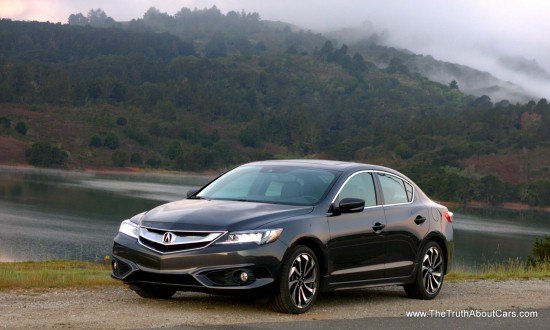






































































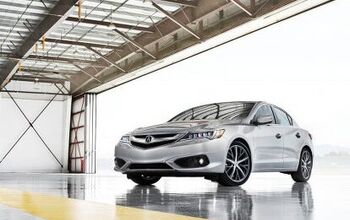
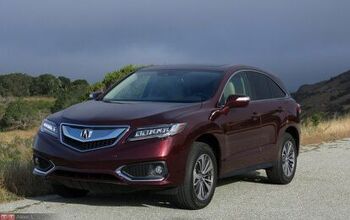
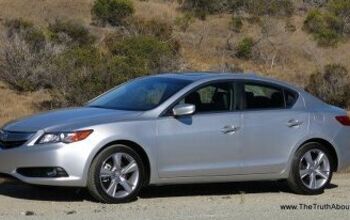
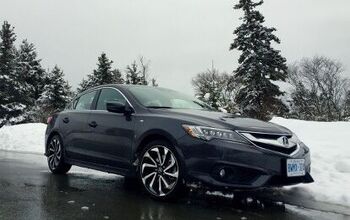
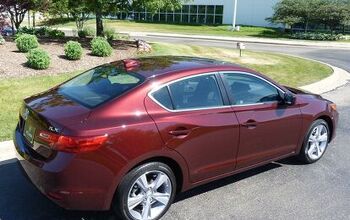










Comments
Join the conversation
The new engine and other revisions have finally made the ILX a desirable vehicle. The first version of the car was a total ripoff; buyers of the 150hp version would have been far better off with a Focus Titanium or the like.
Just got a 2016 ILX Premium and I am very pleased with it. I think Honda/Acura has made a great product but continues to confuse customers with too many trim levels and by Honda offering cars that have way too much overlap. I was in the dealer yesterday and my sales rep noted how he had a handful of people looking at ILX but changed there mind and bought Civics (Touring). The 1.5T Touring Civic is a great car and offers Android Auto and Apple Car Play, while the 2016 ILX offers only iOS Acura Link. Also the first 2 trims on the ILX are pointless (Base and base w/ AcuraWatch). The cost to upgrade from Base w/ AcuraWatch is a few hundred dollars and worth every penny to get Blind Spot, real Milano leather, and the larger dual screen setup. Now there is no denying the ILX DOES NOT matchup with true luxury comps but remember others base models start at: BMW 320I $33,150, Lexus IS 250 $36,550, Audi A3 $30,900, Mercedes CLA250 $32,050, Volvo S60 $33,950. In contrast Acura ILX Technology Plus and A-SPEC Package Sedan top package hits at $34,980 which is thousands of dollars less (up to $10,000 less) than the ILX's comps when properly equipped. Yes the other cars have better names, better fit and finishes, and performance options like AWD that the ILX doesn't offer but is all of this $10,000 better? Unless you are a German fanatic or love the looks and finish of the Lexus IS the Acura ILX is a huge value. Speaking of value my ILX Premium lists at $29,990, I got it for $26,260. At this price and feature set I can live without the German badge and lack of luxury.